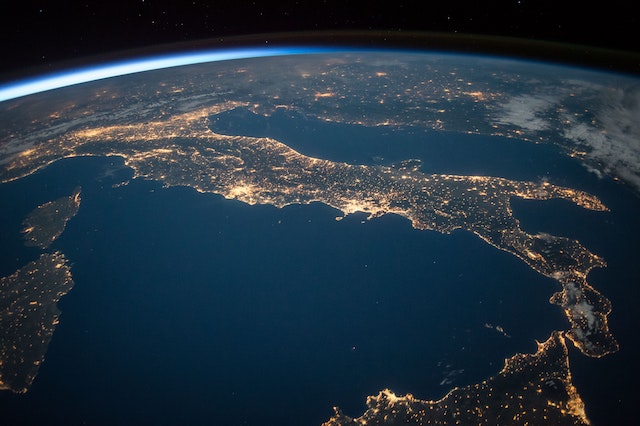
How much space junk is there? There are over 128 million pieces of space junk in orbit around Earth at the moment.
There are 5,465 satellites orbiting in space at the moment. 84% of those are in a low Earth orbit. There is also the International Space Station circling the Earth. Over the last decade, satellites have become much smaller than they used to be, known as super-microsatellites. Over 2,000 of the satellites are super-microsatellites. They can be smaller than they used to be because of improvements in technology. All of these things are not space junk. Generally, everything else floating around in space is space junk.
There is so much space junk that space agencies on Earth need to track it. The American Department of Defense is tracking more than 34,000 pieces of large space junk. These are all of the pieces that are 10 cm or larger. They also estimate that there are another 900,000 pieces that are between 1 and 10 cm, as well as another 128 million pieces that are smaller than 1 cm. There are probably even more pieces that are micrometer sized. It is possible to track pieces that are about 3 cm in length if they are in low-Earth orbit, but it becomes harder to track space junk as it gets higher. There is over 8,000 tons of space junk whizzing around the planet. Space junk reaches speeds between 10 and 14 km/s and impacts can cause severe damage.
So, where has it all come from? There are three general ways that something becomes space debris. The first way are things that no longer have any use, such as decommissioned satellites, disused rocket parts, dead spacecraft, and spent rocket boosters. The second way are things that have been lost or that have fallen off something. There is a glove, a thermal blanket, and even a toothbrush orbiting the Earth. The third way is intentional. All of the major space powers have tested out anti-satellite weapons at some point in their history. They want to be able to destroy an enemy satellite and they test their ability by destroying one of their own. This is an effective test of the weapon, but it means that the newly exploded satellite is now a pile of space junk.
Another problem arises because the pieces of space junk collide with each other, breaking up and creating even more space junk. We could reach a point where we can’t leave the planet because there is too much space junk to get through. Pieces large enough to do significant damage to spacecraft are tracked and launches are timed to avoid them. There is no way of avoiding all of the smaller pieces, so spacecraft have to be built with space junk protection. Many spacecraft use something called a Whipple shield, which breaks up the pieces of space junk when they impact it, reducing the damage they can do.
Space junk in the lower atmosphere is slowed down by drag and drops back to Earth at the rate of about 3 pieces a day. However, those pieces in higher orbits don’t experience as much drag and can stay up far longer. In 1958, the USA launched its fourth satellite, Vanguard I, into space. That is still up there, and is not expected to come down for at least another 2,000 years.
What can be done? The first solution is to stop adding to the space junk. Reusuable spacecraft, and bringing satellites down after they have been decommissioned is one solution, but it doesn’t do anything for the space junk that is there now. There appear to be three ideas as to how to remove the space junk that is already up there. The first idea is remotely controlled or autonomous vehicles. These vehicles would attach to pieces of space junk, and fly it to a collection point, from which it can be brought down to Earth. The second idea is to use a laser to slow down the space junk. A laser fired from Earth would be aimed at the front edge of a piece of space junk. It would vaporize the edge of the space junk, providing a thrust in the opposite direction and slowing the space junk down enough that it will fall through the atmosphere. And the last idea is a space net that would gather up space junk.
The main problem with trying to clear up space is that there is no international regulation. There is also no way of making the countries that create the space junk clear it up. Hopefully, as technology improves, it might be possible to clear space up. However, some experts think we are reaching a tipping point right now. And this is what I learned today.
Sources
https://www.ucsusa.org/resources/satellite-database
https://en.wikipedia.org/wiki/Space_debris
https://www.eurekalert.org/news-releases/922214
https://en.wikipedia.org/wiki/Whipple_shield
https://www.inmarsat.com/en/insights/corporate/2022/how-much-space-junk-is-there.html
https://www.nasa.gov/mission_pages/station/news/orbital_debris.html
https://www.nhm.ac.uk/discover/what-is-space-junk-and-why-is-it-a-problem.html
https://www.nasa.gov/audience/forstudents/9-12/features/F_What_Goes_Up_9-12.html
https://www.nasa.gov/mission_pages/station/news/orbital_debris.html
